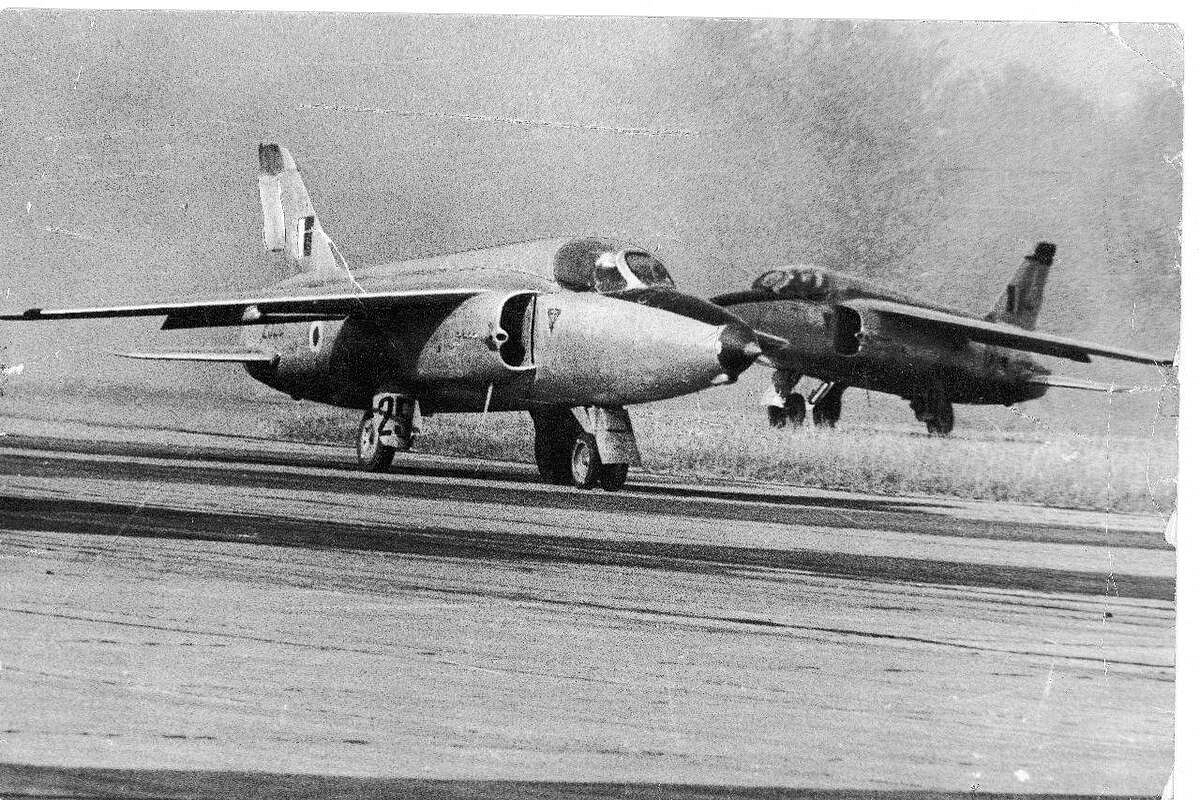Defence
On This Day, In 1971, Indian Navy Once Again Targeted Karachi While Airlift At Meghna Put India Ahead In The Race Towards Dhaka

Indian Air Force fighters in India-Pakistan war of 1971. (Pic via X @IAF_MCC)
On this day in 1971, the Indian Navy struck the Pakistani port city of Karachi again under Operation Python, while the Indian Army conducted a helicopter crossing of Meghna in an attempt to win the race to Dhaka with extensive air-land bombing campaigns led by the Indian Air Force (IAF).
The naval raids of 4/5 December, under Operation Trident, sank four Pakistani vessels, including two destroyers, one minesweeper, and one civilian cargo ship.
However, these strikes failed to completely destroy the oil refinery at Kiamari. The strike damaged the refinery, but some operations there still continued.
On 9 December, three Indian Navy vessels, including the Vidyut-class missile boat INS Vinash (carrying four Styx anti-ship missiles) and two multipurpose frigates — INS Talwar and INS Trishul — once again targeted Karachi.
Vinash fired all of its four Styx anti-ship missiles, all hitting their targets. One missile struck the oil farms at Kiamari, completely destroying them, while the other three hit the Panamanian fuel tanker SS Gulf Star, the Pakistani Navy fleet tanker PNS Dacca, and the British merchant vessel SS Harmattan.
This completely shut down operations at Kiamari, creating a fuel crisis in Pakistan, with most of its fuel reserves and ammunition depots getting destroyed.
Meanwhile, the IAF conducted intensive bombing operations in the Chhamb sector as the Pakistani armour offensive began to lose steam. Nearby Pakistani airfields at Hyderabad, Nawabshah, and Jacobabad were hit, while in the east, repaired runways were bombed again, keeping them out of action.
In the east, after the advancement of the 4 Corps, led by Lt. General Sagat Singh from Agartala and the subsequent heli-lift at Sylhet, the center of gravity shifted towards Dhaka, with both the Pakistani and Indian armies racing to the capital.
Dhaka, the jugular vein for operations on the eastern front, was identified by Lt. General Sagat Singh as the main center of gravity, despite instructions from his superiors, including Eastern Army Commander Lt. General Jagjit Singh Aurora, specifically instructing him not to head for Dhaka.
The 4 Corps under Lt. Gen. Sagat Singh had captured the towns of Akhaura, Daukhandi, and Chandpur, east of the Meghna, while Sylhet and Chittagong were under siege.
The battle reached close to Ashuganj, a heavily defended fortress of the Pakistani army that also had a 3,000-foot-long coronation bridge over the Meghna, held by the Pakistanis.
Rather than engaging in a bloody battle over the fortress of Ashuganj and the bridge over Meghna (which was subsequently blown up by the Pakistanis, doubting their capabilities to defend it), Sagat Singh decided to heli-lift troops across the Meghna.
IAF's 110 and 105 Helicopter Units and 14 Mi-4 helicopters flew the 4 Guards on the evening of 9 December, continuing to air-lift them until 3 am the next morning.
In total, 409 sorties were conducted by the ageing helicopters, airlifting around 5,000 troops and 51 tonnes of equipment.
This placed Indian forces once again on the path to Dhaka, supported by an intense bombing campaign by the IAF. More than 147 sorties were flown in support of these operations, destroying or rendering unfit around 100 vessels, road, and railway lines.
The alacrity with which Lt. Gen. Sagat Singh moved his forces towards Dhaka created a paralysis-like situation in the Pakistani eastern command headquarters.
The naval raids by the navy, rapid movement of Indian troops supported by bombing campaigns will create a situation which will lead to a surrender by the eastern command at Dhaka.
Support Swarajya's 50 Ground Reports Project & Sponsor A Story
Every general election Swarajya does a 50 ground reports project.
Aimed only at serious readers and those who appreciate the nuances of political undercurrents, the project provides a sense of India's electoral landscape. As you know, these reports are produced after considerable investment of travel, time and effort on the ground.
This time too we've kicked off the project in style and have covered over 30 constituencies already. If you're someone who appreciates such work and have enjoyed our coverage please consider sponsoring a ground report for just Rs 2999 to Rs 19,999 - it goes a long way in helping us produce more quality reportage.
You can also back this project by becoming a subscriber for as little as Rs 999 - so do click on this links and choose a plan that suits you and back us.
Click below to contribute.
Latest